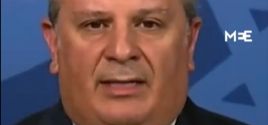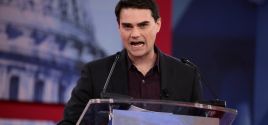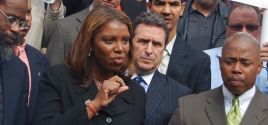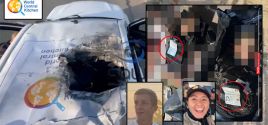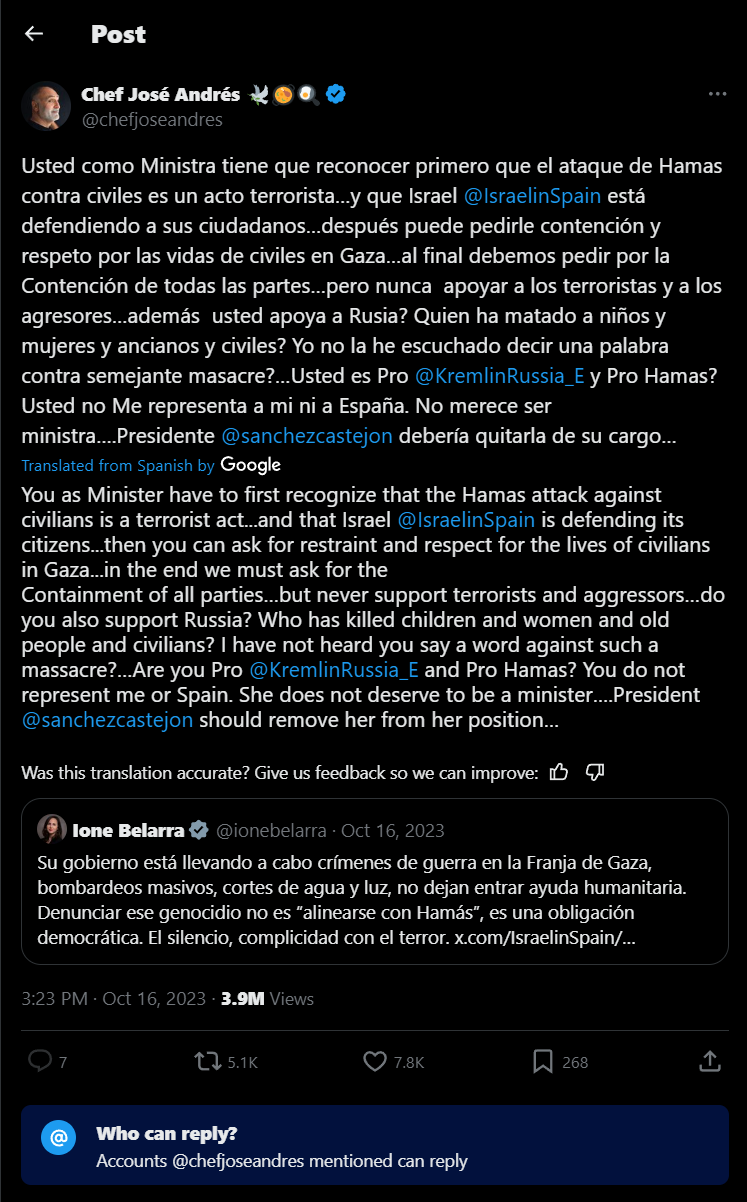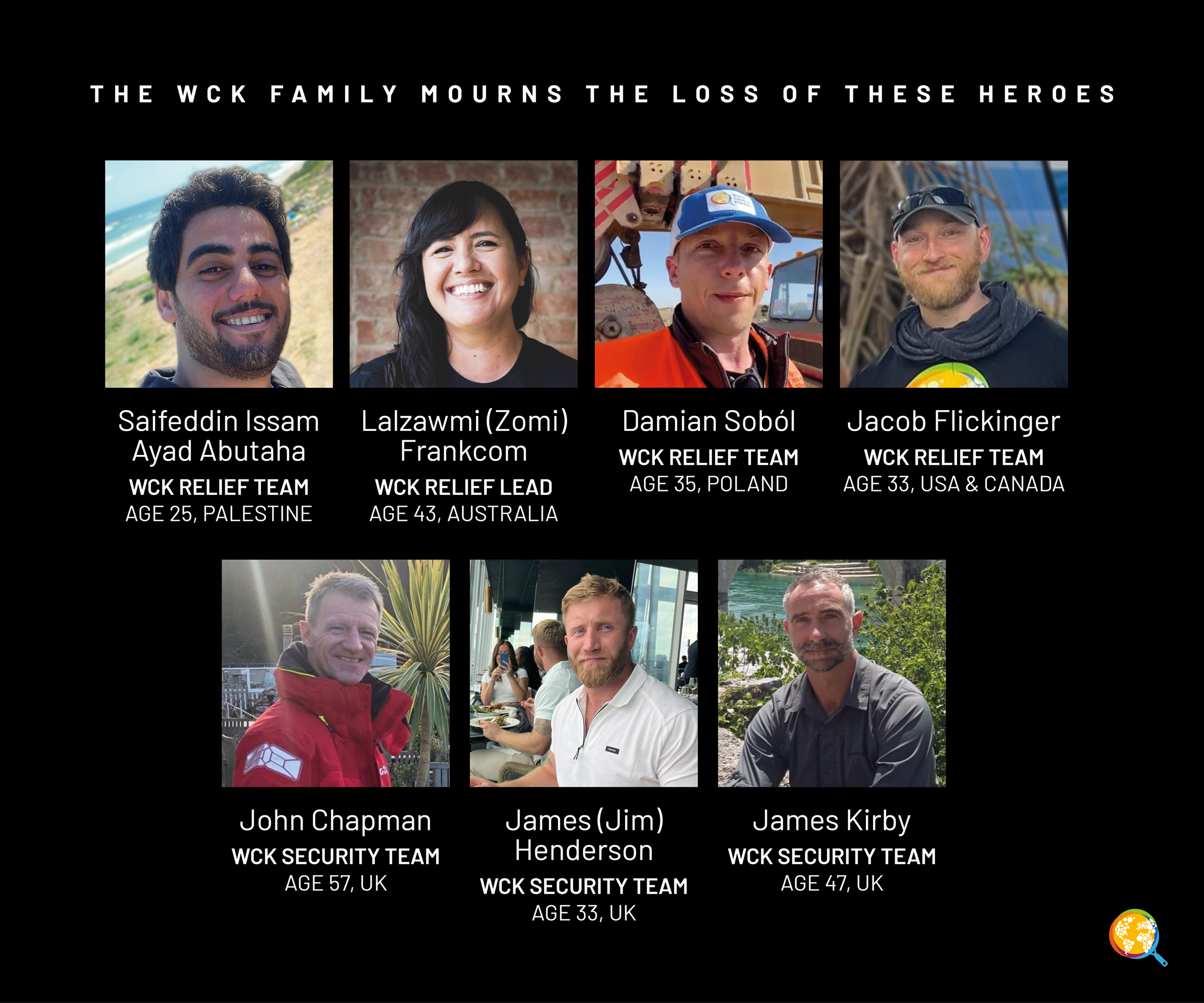The Great Brown Scare: The Amerika Deutscher Bund
in the Thirties and the Hounding of Fritz Julius Kuhn
Link:
http://www.nnnforum.net/forums/inde...s-in-usa-act-against-patriot-gentiles.323188/
Peter H. Peel
A note on the title: Liberal-Establishment historians have an all too effective propaganda device to promote approved ideologies. They invent labels which, in due course, are thoughtlessly parroted and tend to set the desired concepts in concrete, obviating any further need for argument. Thus the raids carried out by Attorney General A. Mitchell Palmer on subversive and revolutionary Communist groups, mostly on New York's Lower East Side, in 1919 and 1920, have been derisively labeled "The Great Red Scare." This neatly glosses over the very real threat such groups constituted in the early days of Bolshevik euphoria and proselytizing and the horrors taking place concurrently not only in Russia but in Bavaria, Hungary, and elsewhere under Communist regimes. The potent label "McCarthyism" is a later example of the use of this tactic to deflect any expression of concern about subversive conspiracies. The "Bund," however, which is the subject of this paper, was never, as I will show, a danger or in any way unpatriotic or subversive. Its enthusiasm for the recovery of German pride, self-confidence, economy, and independence after 1933 was a natural enough emotion in an ethnic and cultural minority, especially one which had suffered great humiliation and persecution during the recent war. But there were many and powerful special interests which sought, with considerable success, to create the image of a frightful menace in the Bund. I have therefore chosen to call this paper by the title above. Besides, even the color "brown" seems a more appropriate modifier for the noun "scare."
In the feverish eight years of world history immediately preceding the entry of the United states into World War II, there streaked across the American political firmament a rather noisy meteor officially called Das Amerikadeutscher Bund, more generally referred to as the German-American Bund or simply as the Bund. In its brief lifetime, the Bund was the object of much hostility, suspicion and fear. It had an almost universally "bad press" and wild exaggerations concerning its aims, its size and its resources were uttered with patent self-interest and
arrières pensées by a number of politicians, journalists and assorted public figures. Yet post-war historians usually dismiss the Bund in a sentence or two when writing general histories of the American thirties. For example:
The Bund appeared to be more powerful than it was. It attracted so few members and aroused so much antagonism that the Third Reich severed its ties with this stupid and noisy organization which it recognized to be a liability. /1
The tone is still hostile and derogatory but one should recall this when reading the wild accusations by influential politicians and others (
vide infra) that its funds and its programs were provided directly from Berlin. The same writer just cited offers an apparently contradictory assessment of the Bund's strength, however, when he tells us that in February, 1939, "22,000 members and sympathizers of the German-American Bund packed Madison Square Garden." /2
When I first became interested in the history of the Bund about twenty years ago, there was not only no scholarly study of it or of Fritz Kuhn but not even a popular account. /3 Not until 1974 does any such appear and inevitably it is polemical and hostile in tone. /4
The Bund itself maintained few records. Its newspaper,
Deutscher Weckruf und Beobachter, is virtually unobtainable, and former members are now dead or elderly and fearful and unwilling to identify themselves or to be interviewed or quoted. Nevertheless, contemporary magazines and newspapers provide us with a great deal of information from which it is relatively easy to filter out mere invective and diatribe.
The questions to be addressed in this paper are as follows: What were the ideological, emotional and historical roots of the Bund and how did its enemies encompass its destruction and wreak vengeance upon its leadership? The Bund was, after all, itself a reaction. It was certainly not a "Goethe Society." And it did not spring into existence fully grown like Pallas Athene from the head of Zeus. In its final form was it a tactless, overly vocal, overly demonstrative reaction of largely unsophisticated elements to a painful and humiliating ethnic experience? Or was it, as its enemies alleged, a sinister and subversive alien conspiracy and a nest of treason?
Richard O'Connor, discussing Sinclair Lewis's contemporary cautionary novel,
It Can't Happen Here, tells us:
"It" never did happen here, or even came close to happening. Fascism ... was opera bouffe. Its promoters were clowns and its followers slightly demented sheep. A Nuremberg-type rally in Madison Square Garden, with all its sweating solemnity and raucous appeals to unreason, was an hilarious spectacle when looked back upon. /5
The passage just cited was published nearly thirty years after the demise of the Bund and the reader may consider it to be evidence of the persistence of unmitigated dislike for the Bund even among authors who, like O'Connor, are generally admiring of
Deutschtum and the German record in the United states since colonial times.
Arthur Smith (
vide supra, n.2) remarked to this writer that the Bund was "largely playacting." /6 Is this consistent with a sinister menace, one must ask.
Time describes the
Bundesleiter thus: "No great shakes as a chemist was simple, earnest Fritz Kuhn" [emphasis added]. /7 On the other hand, O'Connor says:
But appearances were deceiving in Kuhn's case. Actually he was a well-educated man, if not an intellectual. After the war he had attended the University of Munich and received a master's degree in sciences. /8
Contradictions abound. On the one hand, we have an entirely undocumented assertion by Harold Lavine of the Institute of Propaganda Analysis that Dr. Goebbels had "created" the Bund; /9 on the other hand, we have the utter failure of successive official investigations to demonstrate any connection between the Bund and the Reich government bureaux beyond a natural and unconcealed exchange of literature. A feature article in the
New York Times as late as February, 1939, concludes: "There has been no evidence of any active support of nazism [sic] in America on the part of the Nazi [sic] diplomatic force in this country." /10 Even Alton Frye, a virulently hostile commentator, says:
Since it employed the appurtenances of a Nazi organization, the general conclusion was that the Bund received its directions ultimately from the Reich. This was not strictly true, but the Bund readily adapted itself to the will of the Nazi Party without the need of specific instructions. Shortly after the founding of the Bund, Kuhn led a delegation to Berlin for the 1936 Olympics, where he was receive briefly by Hitler. This is the only known meeting between Khun and the Führer and there is no evidence that Hitler attached any special significance to it. /ll
According to Frye, Kuhn nevertheless claimed to Bund members that he had concluded a secret agreement with Hitler, which Frye clearly disbelieves. As we shall see, Kuhn's tendency to brag a little became a source of some embarrassment to Germany and a cache,
gratis, of all kinds of ammunition for his enemies. One of the most energetic and implacable of those enemies was Congressman Samuel Dickstein. Dickstein, testifying at one of the interminable investigations, claimed to have knowledge of the details of secret discussions between Kuhn and Hider. As history has shown to the present day, Dickstein's is an imaginative race. We may, perhaps, warm to Kuhn a little for his reply to Dickstein's charge. Quoting a contemporary radio comic, Kuhn said, "Vas you dere, Sharley?"
The Historical Experience of Germans in America
It is necessary in the course of explaining the roots of the Bund to offer at least a synoptic sketch of the role of the German element in this history of the United States. Construed as a minority ethnic group, Germans constitute probably the largest single element, exceeding even the Irish, with whom they have intermarried considerably. Estimates for those of German or part-German descent range up to 52 million, far exceeding the Blacks and, at least for a while, the "Hispanic" hordes pouring across the Rio Grande.
The usual date given for the arrival of the first Germans in the colonies is 1683, but one writer has asserted that the "damned Dutch" in Jamestown in 1607 were actually the first. /12 The "Dutch" governor of New Amsterdam, Peter Minuit, was born in Wesel on the Rhine, and about 1664, Johann Prinz arrived in New Sweden (now Delaware) with fifty-four German families from Pomerania /l3 The story of Jacob Leisler, the second governor of New York in the confused period of the English "Glorious Revolution" of 1688, is well known.
The first permanent and wholly German settlement did indeed take place in 1683, when Germantown, Pennsylvania was founded. The German immigrants of 1683 were Protestants of various fundamentalist sects. Francis Daniel Pastorius, their leader, was an educated man, but Gennan immigrants, in 1683 and thereafter, were tradesmen, skilled artisans and farmers. Huebner lists carpenters, locksmiths, shoemakers and tailors. /l4
During the War of Spanish Succession (1701-1713), large numbers of poor refugees began arriving from the Rhineland, devastated by the aggressive designs of Louis XIV. In the single year of 1709, more than 600 families were shipped to the Carolinas. After the large influx of Hessians, many of whom stayed on after the Revolutionary War, German immigration continued at a fairly modest level. It began to increase again in the period 1830-1850 and positively exploded after 1852, amounting to perhaps a half a million in a very few years. /15 Again the preponderance seems to have been women, small tradesmen and peasants, although there was a fairly sizeable contingent of liberal intellectuals-refugees from the failed revolutions of 1848.
In the sunnier days before Europe began its suicidal "Peloponnesian Wars," Germans in America had no doubts about their successful integration into American life. Germans played a major role in the Federal Army during the War between the States. The XI Corps of the Union Army contained two entirely German divisions and the name of Carl Schurz is prominent in the history of the period. Germans also played an important part in the Westward Movement.
Wine flowed from German vineyards, gold from German discovered mines, wheat from virgin prairies broken by diligent and skillful German farmers, and blood from Indians who fought the cavalry regiments with their large proportion of German troopers. /l6
During the epoch between the Gilded Age and the outbreak of World War I, a number of German families moved up socially and were assimilated into the then Anglo-Saxon Establishment. Chief among them were the big brewing families of St. Louis and Milwaukee and the meat barons of Chicago. But for the Swabian and Bavarian peasants, the Austrian and German waiters and beer-garden proprietors, a certain, sentimental
Heimweh (homesickness) was always present. The Songfest at the local Turmverein Halle (gym) was at least as natural and
gemütlich (innocently cheerful) as a
Cinco de Mayo parade in Los Angeles or St. Patrick's Day in New York
The unification of Germany under Bismarck, though incomplete without German Austria, was by 1871 a source of great and justifiable pride for persons of German ancestry everywhere. So was the seemingly miraculous victory over erstwhile mighty France in six short months. Germans had no longer to smart under a somewhat patronizing view of them as rather quaint peasants and pedagogues with a medieval social structure.
In the late nineteenth century there reigned an era of great good will between the United States and Germany. German universities attracted many American students and the American university system itself was modeled after that of Germany and not, as one might have expected, after Oxford and Cambridge. German immigrants were encouraged and welcomed because of their enterprise, hard work, and respect for the law.
Not very long after the outbreak of World War I in 1914, this affection and admiration was to undergo an almost total
volte face from which it never recovered. It is not necessary here to dissertate upon the causes of this change of heart. It was essentially due to the extremely effective and one-sided propaganda to which the American public was exposed. The effect, however, was that even before the entry of the United States into the war, public sentiment in the United States had become virulently anti-German. And the understandable reaction of German publications in the United States to defend their ancestral land only succeeded in exacerbating the hostility.
Huebner and O'Connor are both very graphic on the subject of the German-American reaction to Allied propaganda and the enormous advantage that the propaganda had in English-speaking, Anglo-Saxon dominated America.
When eminent Americans of German ancestry defended the Central Powers with the same passion which innumerable other Americans were bringing to the support of the Entente, they were dismayed to find that in their case such efforts were held to be akin to treason. Their response -- as human as it was unwise -- was to speak with only greater anger and violence. /l7
Referring to the last months of 1916, O'Connor points out that "German-Americans" were now "only a few months away from the most traumatic moment in their history as part of American life." /l8 Huebner writes that at this critical period, the inability of the Central Powers to present their case fairly and the incessant denunciation of everything German caused many German-Americans to become even more pro-German than they might otherwise have been. They bitterly resented the epithet "Hun" applied to themselves and to their kin in Europe as well as President Wilson's contemptuous remarks about "hyphenated Americans" and his doubts as to their loyalty. /19
In describing H. L. Mencken's biting attack in 1920 on those "who had fought the war with their mouths"-the bullying of elderly German waiters for example-O'Connor has the following very interesting sentence for those of us who have witnessed the same propaganda warmed over for use in the Second World War.
Nor did Mr. Mencken believe that posterity should overlook the New York Tribune liar who invented the story about the German plant for converting the corpses of the slain to soap. /20
The teaching of the German language was forbidden by statute in twenty-six states. /2l Even Hermann Hagedom, a great friend of Theodore Roosevelt, was suspected because of his German name and the fact that his water-tower "commanded" the arms factory at Bridgeport, six miles away. /22
The venomous hysteria even extended to the animal world and the lives of dachshunds, schnauzers, weimaraners and German shepherds (temporarily renamed Alsatians) were made miserable by small boys aping their super-patriot fathers. /23
The end of it all, of course, was what John Maynard Keynes called "the Carthaginian Peace": the Diktat of Versailles. Not only Germans but even among Germany's former enemies there was a growing number of those who felt a great revulsion at the spectacle of the victorious democracies exulting in their unbridled orgy of revenge, and who perceived in the vicious spite of the victors the seedbed of another war. Harold Nicolson, a member of the British delegation at Versailles, wrote:
We came to Paris confident that the new order was about to be established; we left it convinced that the new order had merely fouled up the old ... conscious that the treaties imposed on our enemies were neither just nor wise ... that seldom in the history of man has such vindictiveness cloaked itself in such unctuous sophistry. /24
If Englishmen could harbor such sentiments, it is hardly to be wondered at that the shock and horror at the
Diktat and the real or apparent cynical betrayal of the promise of a just peace implicit in Wilson's "Fourteen Points" were infinitely more acute among Germans and German-Americans. It is also pertinent to note that despite the starvation and misery of the immediate post-war period in Germany, the moral
stigma which was forced upon Germany by the "war guilt" clause (Article 231) burned as a deeper humiliation and injustice in the German soul than the physical deprivation of food, territory, armaments or money. O'Connor writes of the lingering resentment of German-Americans for their treatment and their suspicion in the thirties that "F.D.R. was heading toward another intervention in Europe." /25 It was undoubtedly this sense of injustice and persecution which accounts for a certain degree of stridency in the public utterances of the Bund and its leaders.
I have quoted O'Connor at some length precisely because his hostility towards the Bund and his description of it as a small minority "infected" with the "Nazi virus" and as a "lunatic fringe" tends, I believe, to lend all the greater verisimilitude to his sympathetic description of the role of Germans in American history. Unencumbered by either love or loathing, we may now approach the study of the Bund itself and its enemies without recourse to the kind of epithets and disclaimers which O'Connor appears to find necessary. That the Bund acted rashly, and sometimes lacked the sensitivity and Levantine subtlety which might better have served the interests it sought to defend, may well be true. But it was surely a very human and natural reaction to the humiliations of World War I and to the Versailles
Diktat as well as glory and pride in the post-1933 German renaissance. And if, despite its best and most earnest efforts,
Deutschtum was fated never again to win the affection of pre-war days, it could at least win respect. German-Americans and Germans of the Reich alike could derive a thrill of pride at the new mood of hope, the achievement of full employment, and the general transformation in so short a time from pariah Germany into a Germany which spake with such confidence in the councils of World Powers. This writer as a teenager was a personal witness to that extraordinary and ubiquitous mood of joy and uplift, having spent a vacation in Germany from his native England, at that time plunged in the all-pervading gloom of the Great Depression.
Such was the historical milieu into which the Bund was born.
The Bund and its Enemies
The German-American Bund was, in fact, the third generation of successive organizations in the United States which were sympathetic to Germany and to National Socialism. The first of these was the Nationalsozialistische Vereinigung Teutonia.
[A] number of Hitler's followers fled abroad after the abortive Hitler-Ludendorff Putsch of November, 1923, and it would have provided a logical motivation far the formation of a National Socialist organization elsewhere. The founder..., Friedrich Gissibl, had come to the United States in 1923 and probably founded the organization in October, 1924, in Detroit, later moving to Chicago. The life of the Teutonia was about seven years. /26
The Teutonia was dissolved in March, 1932, and after a confused period during which several insignificant and short-lived groups came and went, was effectually replaced in the summer of 1933 by the Friends of the New Germany. /27
In January, 1934, Democratic Congressman Samuel Dickstein of New York obtained Congressional consent for the establishment of a committee to investigate "Nazi activities" in the United states. "It was thought that the Nazis would be sure to exploit the fact that a Jew, Samuel Dickstein, headed a committee investigating Nazi activities...therefore [Congressman John] McCormack was selected as chairman." /28 The work of the committee was "to create the image of a widespread conspiracy with truly giant proportions." /29 The German Foreign Office was besieged with complaints about the Friends' activities and began to disassociate the government of the Reich from any connection with the organization or with its successor, the Bund. /30 Prior to late 1935, these organizations had included in their membership American citizens, both native-born and naturalized, as well as some Reich citizens who were legal resident aliens or temporary residents such as students or businessmen. It is interesting to note that among the native-born American members were some with unimpeachably Anglo-Saxon names. Sympathy for Germany has never been wholly restricted to those of German descent.
In the interests of appeasing the increasingly inflamed teutonophobia in the United States, Deputy Führer Rudolf Hess, in October 1935, acting through the Foreign Minister, Baron von Neurath, issued the
Oktober Direktiv. This was an order which forbade the participation of Reich citizens in the United States in domestic organizations or societies. Fritz Gissibl, on learning of the
Direktiv, went to Germany in November where he attempted to persuade the Foreign Ministry to permit those who had taken out their "first papers" (that is, had made the initial application for American citizenship) to remain members of the Friends. He was unsuccessful in this endeavor. /31
In March, 1936, as a result of both of the
Oktober Direktiv and of the hostile publicity emanating from the McCormack-Dickstein Committee, a final convention of the Friends was held in Buffalo and the German-American Bund was created. phoenix-like, from the ashes of its predecessor. Fritz Julius Kuhn was elected
Bundesführer or
Bundesleiter. Kuhn had been an American citizen since 1934. He was born in Munich on May 15, 1896. He had served in World War I as a lieutenant in the Bavarian army and had been decorated with the Iron Cross. In 1923, he went to Mexico where he worked as a chemist. Subsequently, he entered the United States as an immigrant and obtained work as an industrial chemist at the Ford plant in Detroit. He became a naturalized citizen on December 3, 1934. While in Mexico, he had married a fellow student whom he had first met at the University of Munich In due course, his wife, Elsa. presented him with a son and daughter (Walter and Waltraut).
During most of Kuhn's period of leadership in the Bund, he was on unpaid leave-of-absence from the Ford plant, which gave rise to the widespread but unsubstantiated allegation that "certain wealthy industrialists" had financed the Bund. It would appear that "certain interested parties" which had already evinced extreme hostility to Henry Ford saw in the allegations about the Bund's finances an opportunity to fire two salvoes for the price of one.
From June 1936 until its dissolution, the characteristic activities of the Bund and those of its implacable enemies take center stage.In default of the Bund's own publications, insights may be -- with the greatest caution -- achieved from newspaper and magazine articles of the period despite their polemical nature. An article, "Star Spangled Fascists" which appeared in the May 1939
Saturday Evening Post seems minimally fairer than most. Thus the "thriving state of our current Fascist crop does not mean that [they] receive cash from the Nazis." The article suggests that the links to the Fatherland are rather "a fraternal source of inspiration." It offers an estimate of "8000 to 10,000 uniformed. strong-arm storm-troopers." From the same article we learn that the Bund publishes a youth magazine and four local issues of the
Deutsche Weckruf in New York, Philadelphia, Chicago and Los Angeles. Some twenty other German newspapers are alleged to give it "aggressive backing." The Bund's customary activities involve:
a never ending round of meetings, the largest and most successful of which was the recent mass celebration of Washington's birthday in Madison Square Garden. That meeting was attended by some 22,000 Bundsmen and their sympathizers. These activities and the propaganda which they spread all appear to be within the law.
Describing the Bund's 'folder of purposes," the writer says that it begins with the "embrace of the Constitution, Flag and Institutions of the United States" and then lists its enemies as (
inter alia):
all abuse of the pulpits designed to undermine the Morals, Ethics or patriotism of Americans; all Racial intermixture between Aryans (White Gentiles) and Asiatics. Africans or other non-Aryans; all Subversive Internationalism; the liberal-pacifistic forces undermining the morale of Youth; Alien-controlled, international so called Labor Movements; the Rackets of International Finance....
The Bund urges, the article continues, an American movement of liberation in order that "the dictatorship of a small racially and ethnically alien Jewish minority to which the mind of the entire nation is being rapidly subjected, may be broken."
When der Tag comes, the Bund's young men will probably be the first on the barricades. But there is nothing in its program, either of venom or of violence, that cannot be matched in the propaganda of more authentically American groups. /32
It is well to keep constantly in mind the wild variations in estimates of the Bund's numerical strength and by extrapolation to consider that all other conjectures, for example as to its treasonable or subversive nature, may be equally wide of the mark. We have just quoted one estimate of from 8,000 to 10,000 members. Here are a few other guesses: an article in the
Christian Science Monitor suggests that while a press estimate of from 200,000 to 250,000 may be too high, 70,000 would be a reasonable figure. /33 On January 18, 1938, a Justice Department report which stated that no violations of Federal law were involved in the Bund's activities estimated the Bund's strength at the rather precise figure of 8,299. /34 In 1939, the Dies Committee -- otherwise known as the House Committee to Investigate Un-American Activities. or HUAC, and chaired by Martin Dies -- produced a witness using the alias "Ralph Metcalfe" who testified to a figure of 500,000. /35
At a somewhat earlier date, Dickstein charged that the figure was 200,000 and a "War chest" of $20,000,000 existed (about a quarter of a billion in today's terms). To this, Congressman Thomas riposted that "Mr. Dickstein has more Communists in his own district than there are Nazis in the whole United States." /36 In retrospect, most authorities appear to have agreed that the larger figures for Bund membership were sheer fantasy, dreamed up by people with an enduring penchant for vast numerical exaggerations, no doubt; but Kuhn's own tendency to exaggerate a little added fuel to the all-too-willing fires. He mentioned a figure of 200,000 in 1938. /37
In the same way, hints dropped by Kuhn of secret agreements he had made with the Reichskanzler himself in connection with the 1936 presidential election were acutely embarrassing to Germany. It was in 1936 that Kuhn and some fellow Bundists attended the Olympic Games in Berlin where Hitler received him briefly and accepted from Kuhn a donation of about $3000 for the
Winterhilfe (Winter help) fund. Kuhn then implied that his support for Alf Landon had been arranged with the Fuhrer. The German embassy in Washington immediately denied that there was any truth to the story or any attempt to influence American domestic politics.
In March, 1936, the Bund held a protest meeting against the proposal of New York's falsetto-voiced, half-Jewish mayor, Fiorello La Guardia, to install a bust of Hitler in the Chamber of Horrors at the New York World's Fair. Meanwhile the indefatigable Congressman Dickstein demanded that the House conduct a Congressional investigation of Kuhn's purported $20,000,000 fund. He contended that "thousands" of Bundists drilled every Sunday at Camp Upton; that Henry Ford had not destroyed the plates of his "anti-Jewish book." Kuhn merely answered that Dickstein was a Jew and a Soviet sympathizer. /38
A certain Julius Hochfelder, head of an "anti-Nazi" organization, now entered the lists. He demanded that Attomey-General Cummings bar the Bund's newspaper from the mails, claiming that it was German-subsidized and under the direct control of Dr. Goebbels. /39
A
New York Times feature article of March, 1937, reported Bund membership at about 10,000 and ridiculed Dickstein's "200,000 army of stormtroopers." It admitted the Nazi ideology but said that there was no coercion, only education, in the activities. /40 The secretary of something called "The Non-Sectarian Anti-Nazi League" petitioned Congressmen Dickstein and citrone to investigate a "new Nazi Camp Nordland" at Andover, New Jersey, claiming that it was the seventeenth camp for boys and girls operating illegally on American soil. /41
The Bund Camps, Camp Siegfried on Long Island and Camp Nordland in New Jersey, appear to have been the sites for somewhat bucolic gatherings of Bundist families for picknicking, beer drinking, singing and some pro-German and so-called 'right-wing Americanism" speeches as well as some calisthenics and marching about by uniformed children. They were, however, increasingly portrayed by their enemies as sinister, paramilitary training facilities. The reader may care to recall Mr. Hagedorn's water tower (
vide supra). In a lighter vein, we find a Bund leader, August Klapprott, protesting that the
New York Times had falsely reported that mainly German beer was drunk at Bund rallies whereas in fact it was mostly American beer that was consumed. /42
On July 21, 1937, Representative Martin Dies of Texas asked for a Congressional investigation of the "un-American activities of Nazis, Fascists, Communists and White Russians." Dickstein urged the adoption of Dies' resolution and warned that "twenty-one Nazi camps" were close to "big munitions factories." /43
You remember what happened in 1916... If you want to fix it so that when we get into trouble again [emphasis added] we will have to fight our enemies from within as well as from without, well, just let this thing keep going on like it is going. /44
Kuhn answered Dickstein's charges by demanding, as he was repeatedly to do in the next two years, a Congressional investigation "to stop the nonsense...once and for all, I demand as an American citizen, an investigation of our organization and our camps." /45
In August, Dickstein, for the second time, inserted into the Congressional Record a list of names of "persons spreading un-American propaganda." One smeared individual by the name of Dietrich Wortmann, not a Bundist, was the president of an amateur athletic association. Wortmann complained that under the law he had no redress for Dickstein's slanders and demanded that a committee of inquiry be set up to clear himself of them. Also in August, Julius Hochfelder asked the Immigration and Naturalization Department to revoke Kuhn's citizenship. Kuhn wrote to the Speaker of the House, Bankhead, again demanding an investigation.
But all reaction to the Bund was not hostile. Charles Masterbrook, Vice-Commander of the New Jersey American Legion, said that he could find no more fault with German-American gatherings than with St. Patrick's Day parades. Major-General George Van Horn Moseley, retired former Second-in-Command of the Army, said, "Nazis in America have only one mission...to see to it that the Communists shall not take possession of this nation." /46
But teutonophobia was being extended even to sporting events. The Anti-Nazi League of Congressman Samuel Untermeyer (the gentleman who personally declared war on Germany in 1933 on behalf of World Jewry) proclaimed a boycott of the Max Schmeling-Joe Louis fight at the Garden. Bundists in Southbury, Connecticut, were arrested under a dusted-off blue law forbidding work on the Sabbath -- they had been cleaning up their camp on a Sunday. Bundist meetings were increasingly subjected to violent attacks by organized mobs or else their proposed meetings were banned in advance by local authorities.
In May, 1938, the House approved the setting-up of the Dies Committee, which we have already encountered in these pages. Representative Maverick of Texas, however, said:
It is time this House quit four-flushing and ballyhooing. You know this resolution is aimed particularly at the Nazi movement. It is not the Dies resolutions It is the Dickstein resolution ... [and] will cause race-hatred and may prove the altering wedge for persecutions. /47
Kuhn said later before the Dies Committee that "Jews are Jews first before they are Americans" and quoted the famous Rabbi Stephen Wise as telling a body of the American Jewish Congress (AJC) that he was not an American but a Jew and had been 4,000 years a Jew.
On July 12, 1938, a Suffolk County (N.Y.) court found six officials of Camp Siegfried guilty of belonging to an oath-bound organization and fined them $13,000 under what the
Times called "a rarely evoked statute." Numerous witnesses denied any oath-taking but Judge Hill ruled that the evidence of the solitary State witness had equal weight with one hundred contrary testimonies. /48
HUAC labored mightily and in August brought forth this mouse: "A close relationship exists between the German-American Bund and the Nazi government in Germany." This certainly did not satisfy Dickstein who complained that the Committee had failed to expose Nazi activities and had instead become a "Red-baiting excursion." A month or so later, Kuhn sent a notarized statement to Congress reiterating that the Bund had no political, financial or other ties with the German government. The only ties were those of sympathy for Germany?s emancipation from the oppressions of the Versailles Treaty.
Typical of the quality of testimony presented to the Dies Committee is that of Mr. Arnold Gingrich, editor of
Ken,
Esquire, and
Coronet. Mr. Gingrich declared that he had personally seen German Foreign Office documents which proved that the "job" of the Bund was not merely propaganda but to constitute a military organization for sabotage and espionage. /49
The apogee of the Bund's career came with the great Madison Square Garden Ally of 1939. The
Times, reporting about it on the following day, said that 22,000 had attended with 1,700 police present to prevent violence. Nevertheless, desultory street brawls erupted over several adjacent blocks. As the audience left the Garden, reported the
Times, "the most violent anti-Nazis began assaults on individuals."
The meeting had opened, the report continues, with the singing of the national anthem. There were cheers for Herbert Hoover, Senators Nye, Hiram Johnson, and William E. Borah; and jeers for President Roosevelt. G(erhard) W(ilhelm) Kunze said, "When a Henry Morgenthau takes the place of a Washington, the country is in a deplorable state." The audience roared a mass response when called upon to give the pledge of allegiance to the flag.
A man named Isadore Greenbaum tried to scale the platform and seize the microphone but was prevented from doing so by uniformed stewards. A former magistrate, Joseph Goldstein, was also prevented by the police from serving a writ for criminal libel on Kuhn. An anti-Bund Negro, Peter Saunders, was charged with cruelty to animals after he injured a policeman's horse. /50
Injuries to people were minimal, however, and the violence was not remotely comparable to the violence in London which was a constant feature of the meetings of Sir Oswald Mosley's British Union of Fascists at the hands of the Left, or, in recent years, that directed against the National Front and the British National Party. To the bloody prewar violence this writer can bear personal testimony. What does appear incontrovertible from the reports in the
New York Times and other major newspapers during the years of the Bund's existence, and that parallels events in London where ideologically similar organizations were, and are, concerned, is that violence was never initiated by the Bund but always by hooligans of the far LefL Conservatives know this pattern to be true for their own meetings. Rightist speakers in Britain, in Germany before 1933, and in the United States have frequently been subject in certain "red" areas to violent attacks and had their meetings broken up. This writer has never heard of a Conservative mob, armed with razors, broken bottles and coshes, breaking up a Leftist meeting. It is about as plausible a scenario as stabbings, gang rapes and drugs at a symphony concert. The
New York Times, for example, reported on a group of young lady canvassers for Alf Landon being pelted with garbage and rotten vegetables in New York. /51
---------------------------------[END OF PART ONE; SEE BELOW FOR PART 2]----------------------------
